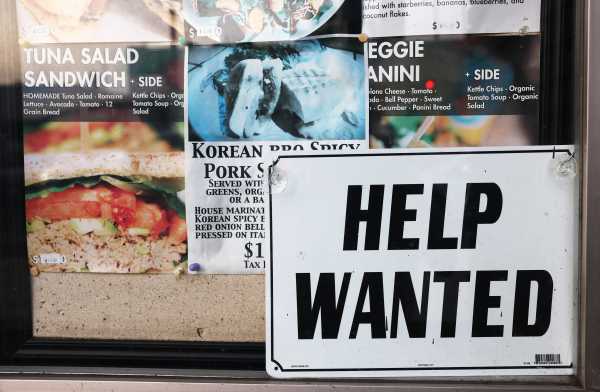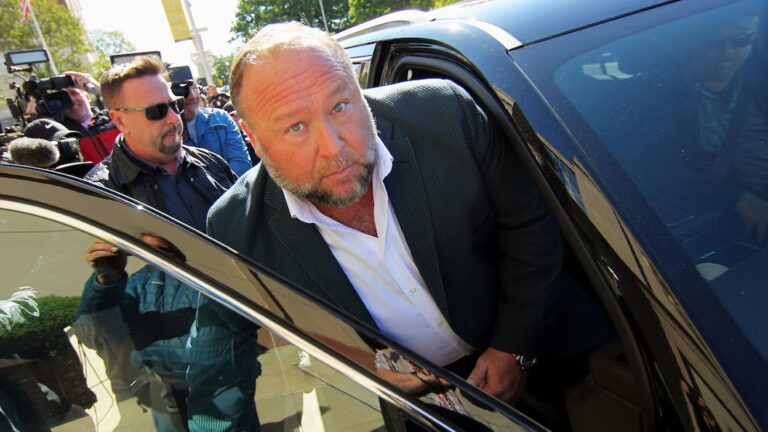
Rachel M. Cohen has been covering social policy and politics for over a decade in Washington D.C. She is a senior domestic policy reporter at Vox.
The Bureau of Labor Statistics’ new jobs report, released on Friday, was a surprise to nearly all economic analysts. The unemployment rate fell to 3.4 percent — its lowest level since 1969 — and 517,000 new jobs were added in January across a wide range of industries. That was more than double the 190,000 new jobs Wall Street analysts had predicted we’d see.
Given mounting fears that to combat inflation the Federal Reserve might push the country into a recession, experts described Friday’s report as definitely good news for the economy.
One outspoken voice was less surprised: Skanda Amarnath, the executive director of the upstart and influential advocacy group Employ America. For the past four years, Amarnath has been urging economic experts across the political spectrum to rethink their long-held assumptions that bucking inflation necessarily means raising unemployment. He has argued that the cure for inflation — higher unemployment — can be worse than the disease and that we should take the welfare benefits of keeping people in their jobs more seriously.
Senior policy reporter Rachel Cohen talked with Amarnath about the latest jobs report, what he thinks it means for workers and interest rate hikes going forward, and how the American Rescue Plan should be judged in 2023. Their conversation has been lightly edited and condensed for clarity.
Rachel Cohen
There’s a very influential economic theory dating back 65 years that says, basically, inflation rises as unemployment falls. This relationship — known as “the Phillips curve” — has been strongly embraced by experts, including at the Federal Reserve, but you’ve been an outspoken skeptic of it for a long time. So to start off, where did your skepticism originate?
Skanda Amarnath
A model is ultimately good if it can give you reliable explanations and forecasts over time. I worked in the private sector for four years at a hedge fund and had the luxury to look at a lot of macroeconomic data, both over history and across countries.
There was a point in time, in 2013, 2014, 2015, 2016, when the US unemployment rate was falling. As it went down, some people started to warn of the risk of more inflation. At the time, I was more sympathetic to this. But then we saw inflation not rise between 2015 and 2019, despite low unemployment. And I started to build a model that looked at other countries and trends over time to see how well unemployment actually reasonably predicts inflation or wage growth.
And the answer is it’s not great. Obviously, if you torture the data enough you can get it to tell you the story you want, but it’s pretty damning that the unemployment rate fell in a lot of comparable countries, like Germany, Canada, Australia, and those low rates did not translate into nominal wage growth or even real wage growth. Inflation and unemployment were just not so neatly tied together.
I’m not going to say there is zero relationship between the two, but I think the trade-offs are often miscast. It’s not the level of unemployment that matters. What probably matters more is the whether it’s going down or up really quickly.
Rachel Cohen
Today we’re arguably watching this Phillips curve theory collapse in real time as inflation falls in wages and prices at the same time that unemployment is also falling. How do you feel? Vindicated?
Skanda Amarnath
It would be cheap to say I’m feeling vindicated, but I will say we’ve at least showcased that there is a possibility that there are outcomes other than what the Phillips curve would suggest. I expect more bumps in the road, I leave room for noise, and I expect that people who are really fond of the Phillips curve will probably have some future opportunities to claim the Phillips curve is still correct. But if you thought mechanically that when wage growth is high and inflation is high, the only way these things go down is through higher unemployment — well you have to actually acknowledge now that maybe there is a wider set of possibilities.
Rachel Cohen
Why do you think there hasn’t been more curiosity about other possibilities?
Skanda Amarnath
I think there’s a tendency among some in certain older generations that we need to be, like, these cynical hard-nosed adults in the room who will acknowledge the harsh realities of the world. A lot of this is informed by their experiences in the 1970s, but there are examples besides the 1970s when inflation spiked and it came down without unemployment rising. I was jarred in 2022 to see some of the rhetoric change so rapidly, to hear people in op-ed after op-ed insist why we definitely need higher unemployment.
Rachel Cohen
There was a recent Washington Post story about the shortage of hospitality and care workers, who have left for more stable, higher-paying work. As a result, the Post estimated there are nearly 2 million vacant hospitality and leisure jobs. Is this a problem? And if so, what’s the solution?
Skanda Amarnath
Ultimately, we’d like people to have the opportunity to be employed if they want to be employed. And from a macroeconomic perspective, ideally, you want activities to be tied to enhancing productivity over time, meaning either making jobs better or finding ways to get more output out. So one interesting thing is that even as food services employment has lagged post-pandemic, real food services consumption has more than recovered.
Now, there are certain sectors that really are essential. You can make a good case for child care, for health care, even for the production of actual food and energy. I don’t want to denigrate any one particular sector, but some sectors are clearly less essential than others.
Rachel Cohen
If I’m hearing you correctly, making sure that everyone has good jobs who wants one should be a higher priority than making sure all restaurants have waiters or busboys.
Skanda Amarnath
Yeah, the idea that “no ‘help wanted’ sign should ever exist” is not to me a sign of a healthy economy. The story for much of 2021 was like, “Where have all the workers gone?” and the suggestion was that it must be that people don’t want to work. But in actuality, there were some sectors that were really eager to hire — Amazon expanding its warehousing staff probably did put pressure on other industries looking to hire. But competing sectoral demand for labor is just very different from saying people don’t want to work.
Rachel Cohen
Where do you think immigration falls into all this? It doesn’t seem like it’s being seriously considered as a solution to some of these identified labor shortages.
Skanda Amarnath
So there’s two levels. On the slightly more technical macroeconomic level, we did have a real curtailment of immigration during the pandemic that’s now normalizing. But on the political level, the politics are just very corrosive and one party is clearly against increased immigration. But I think a lot of interest groups — from organized labor to the Chamber of Commerce — would like to see more immigration. So on the stakeholder side, I think there’s an openness to it, but as long as the Republican Party remains firmly in the camp of “immigration is bad,” we won’t see much. That might change. I think on a longer-term horizon, it could be slightly more optimistic.
Rachel Cohen
What do you think this new jobs report means in practical terms for workers’ wages and bargaining power? We’re clearly not seeing a wage spiral.
Skanda Amarnath
So in terms of the blowout job gains, I wouldn’t be surprised if we see that normalized to trend, or revised downward. But one takeaway I think that’s worth highlighting is that a factor driving January’s gains is a reflection of businesses hanging on to their workers. Companies typically let go of workers from December to January, but there does seem to be an additional willingness among employers to keep their workforce attached, to not treat employees like a liquid asset and rather as something more worth caring for and hanging on to. This could be a recognition among employers that it might not be in your interest to have such a volatile workforce as we saw in 2021 and 2022. A lot of businesses saw the negative effects of that.
I think that also leaves more room for productive relationships between workers and employers. I think there are businesses trying to see things differently than the norms of the past, and from the standpoint of worker bargaining power, that’s a good thing.
Rachel Cohen
Some commentators have said, “Well, the reason we’re not seeing a wage spiral now is because, unlike in the 1970s, organized labor is so weak.” Do you buy this theory?
Skanda Amarnath
The notion of 1970s inflation being driven by unionization has become something of a little potted history that everyone imports subconsciously but I’ve grown increasingly skeptical of. I think unions had more power in the ’60s than in the ’70s, and a lot of the things that people say — like, “Oh, unions got these cost-of-living increases, and that increased wages, and that blew everything apart” — I think when you look at the data a little more closely, that theory is not very compelling. I just don’t think it checks out. If you look at how the total amount of wages and salaries grew, it wasn’t like it had some consistent positive connection with inflation.
Rachel Cohen
The Federal Reserve has raised interest rates from near zero a year ago to more than 4.5 percent today, with the latest increase happening just last week. But one of the Fed’s justifications for doing so was that real wages were falling. That’s less of the case today as inflation declines. Should the Fed continue to raise interest rates?
Skanda Amarnath
A lot of people talked about real wages declining being a reason for the Fed to take inflation super seriously, and we were not one of those people. I think “real wages” have real flaws as representative indicators of outcomes.
For us, Federal Reserve policy to reduce inflation works, causally, through the labor market. We see that as something that can be reconcilable, but you need to put some guardrails around it or else you’ll have a lot of collateral damage just for the sake of inflation, even though inflation may be driven by a lot of other forces than the labor market.
Wage acceleration is still running pretty strong in historical terms. We want non-inflationary labor market progress, but we really don’t want to have labor market backsliding, which is what we’re most obsessed about right now. The Fed right now is aiming for something singularly consistent with recessionary outcomes, and worse outcomes than what they’re letting on.
Rachel Cohen
What does that mean, “They’re aiming for something worse than they’re letting on”?
Skanda Amarnath
So in December, the Fed released what’s known as its Summary of Economic Projections, which are essentially quarterly projections FOMC members have about macroeconomic policy. It’s sometimes mistaken as a strict economic forecast, but it’s not. They’re projections under each Fed member’s view about optimal policy and trade-offs. And a vast majority of the FOMC projected in this report that they expect the unemployment rate in 2023 to go up by a percentage point — to 4.6 percent. But when unemployment goes up in a year by a percentage point, that’s not the last we hear about it. Typically, it gets a lot worse from that point, and the Federal Reserve loses control to rein it in. They have a terrible track record of being able to raise the unemployment rate just a little bit.
Rachel Cohen
Employ America puts a premium on employment and job growth. Why do you think the economic policy establishment has put less of a premium on that?
Skanda Amarnath
On the first level, we take the welfare costs of unemployment very seriously. Most economists wouldn’t disagree that labor market outcomes, in terms of unemployment and wages, are pretty critical for people’s well-being.
That doesn’t mean inflation isn’t a real problem or can’t be a real problem. But economists really struggle with getting rigorous about asking, “What is the welfare cost to inflation?” If wage growth and inflation are roughly in the same ballpark, what is the specific reason to be cooling down that process?
Maybe it’s because Congress says we want to have more stability — but that’s a political reason, not an economic explanation. So what is the economic reason for making inflation the all-important, all-centering issue? I don’t think there’s a good answer to that. Most of the answers end up boiling down to, well, we need to get inflation down now so that we don’t need to get inflation down later with even more unemployment. And I don’t think that’s a very good answer. What’s the independent reason that inflation is bad?
Rachel Cohen
Many pundits have blamed Democrats and Joe Biden for their robust pandemic stimulus, saying the American Rescue Plan (ARP) was too big and contributed to inflation. What do you make of that critique?
Skanda Amarnath
From a welfare perspective, we think the pandemic response was worth it. The design could be improved in maybe some ways, that’s usually the case with big policy measures, but by and large the scapegoating of the American Rescue Plan for all inflationary pressures has not held up well over time.
I’m much happier with the fact that employment rates — on an age-adjusted basis — have largely recovered. If employment levels were depressed for the sake of lower inflation, then it would have probably been harder to bring people back to the labor market. We have seen an employment recovery of the kind we haven’t seen before. The counterfactual that maybe if you did less fiscal policy then you’d have less inflation, well, it also seems to me that the fiscal policy efforts helped to support more employment, and that counterfactual needs to be more seriously engaged by ARP critics.
Sourse: vox.com






